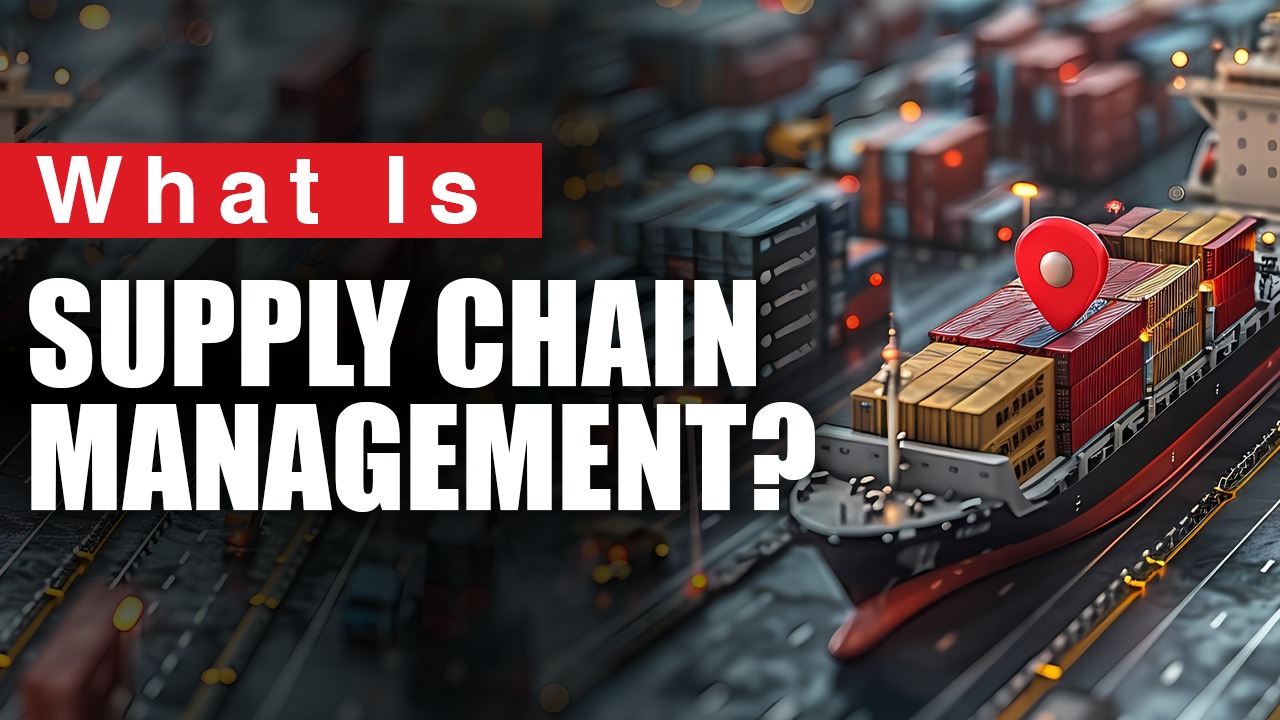Supply Chain Management (SCM) is crucial in ensuring the smooth flow of goods, information, and finances from the manufacturer to the end consumer. Efficient SCM is essential for optimising resources, reducing costs, and delivering high customer satisfaction.
Let’s find out what SCM is, what it means, and the different types of SCM that businesses can implement.
What is Supply Chain Management?
Supply Chain Management refers to the coordinated efforts involved in the entire production flow of a product or service—from acquiring raw materials to delivering the final product to the consumer. SCM encompasses various elements such as procurement, manufacturing, inventory management, transportation, and distribution. The primary objective of SCM is to optimise these processes, ensuring they work seamlessly to reduce costs and increase operational efficiency.
Meaning of Supply Chain Management.
SCM involves managing every step in the supply chain process, focusing on the effective flow of goods, services, information, and finances. The process starts with raw material procurement and continues through manufacturing, quality control, logistics, and distribution until the product reaches the consumer. An effective SCM strategy helps businesses cut unnecessary costs, reduce lead times, and maximise resource utilisation. It is also instrumental in fostering collaboration among different partners, including suppliers, manufacturers, and distributors.
Types of Supply Chain Management (SCM).
There are several types of supply chain management models that businesses use, each suited for different needs and industries:
- Push Supply Chain:
The push supply chain relies on forecasting demand and producing goods in advance. Products are manufactured and distributed based on anticipated market demand. While this model allows for mass production and economies of scale, it can lead to excess inventory if forecasts are inaccurate.
- Pull Supply Chain:
In a pull supply chain, production and distribution occur based on actual customer demand. This model minimises inventory costs and reduces the risk of overproduction. However, it may require a robust logistical system to respond quickly to orders.
- Hybrid Supply Chain:
The hybrid model combines elements of both push and pull supply chains. Companies produce goods in advance (push) but maintain the flexibility to adjust or customise products based on real-time demand (pull). This approach offers the benefits of efficiency while remaining responsive to market needs.
- Continuous Flow Model:
This model is suitable for industries with high demand and stable production environments, such as food and beverage manufacturing. It focuses on maintaining a steady flow of production with minimal interruptions. The continuous flow model is efficient but requires precise demand forecasting to avoid overproduction.
- Agile Supply Chain:
An agile supply chain is designed for flexibility and adaptability. It responds quickly to changes in demand or market conditions. Agile SCM is ideal for industries that experience high volatility, like fashion and technology, where rapid product development and quick market launches are essential.
- Lean Supply Chain:
Lean Supply Chain emphasises minimising waste and improving efficiency. It eliminates unnecessary steps and focuses on streamlining processes to achieve maximum productivity. SCM is often used in industries where cost efficiency is crucial, such as manufacturing and logistics.
Benefits of Effective Supply Chain Management.
Implementing a well-structured SCM strategy offers several benefits:
- Cost Efficiency: Reducing waste, optimising resources, and improving production processes lead to lower operational costs.
- Customer Satisfaction: Efficient SCM ensures timely delivery and high-quality products, enhancing the overall customer experience.
- Enhanced Collaboration: Strong SCM promotes partner coordination, leading to improved supply chain visibility and performance.
- Increased Agility: Businesses with efficient SCM can quickly respond to changes in market demands and mitigate potential risks.
Conclusion
Supply Chain Management is the backbone of modern businesses, enabling companies to streamline their operations, reduce costs, and meet customer expectations effectively. Choosing the right SCM type depends on the nature of the business and industry demands. As technology continues to advance, SCM is evolving, incorporating AI, automation, and data analytics to enhance efficiency and adaptability. Businesses must embrace these changes to stay competitive and thrive in the future.



















